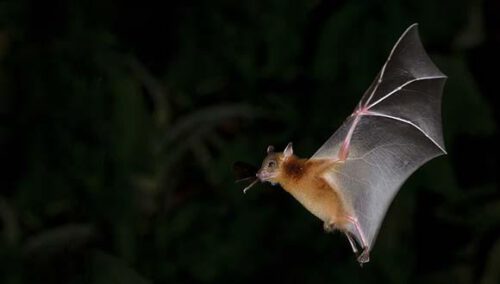If bats can hear and detect obstacles, why do they still sometimes crash into walls?

Researchers from Tel Aviv University conducted an experiment, in which they released bats in a corridor, which was blocked by objects of different sizes and different materials. To the researchers' surprise, the bats collided with large walls made of sponge (which have a weak echo) as if they did not exist.
From the behavior of the bats it was possible to understand that they did this even though they detected the wall through their sonic sonar system, which indicated that the collision was not the result of a sensory limitation, but a problem with acoustic perception. The hypothesis is that the combination of a large object (wall) and a weak echo disrupts the bats' sensory perception and causes them to ignore the obstacle (similar to people bumping into transparent walls).
The research was led by PhD student Sasha Danilovich together with Prof. Yossi Yuval, Dr. Ariane Bonman, and students Gal Shalab and Aya Goldstein from the Laboratory for Sensory Perception and Cognition at the zoology school and at the Segol School of Neuroscience. The study was published in the prestigious journal PNAS.
Large bone - high echo intensity, small bone - weak echo intensity
Later in the experiment, the researchers systematically changed the dimensions of the echo-reflecting objects in the corridor in terms of size, texture and echo intensity, and came to the conclusion that the bats' acoustic perception depends on a coherent and characteristic relationship of the dimensions to objects in nature. For example, a large object - high echo intensity, a small object - weak echo intensity.
"Bats are the champions of acoustic perception. They are able to locate very small objects, such as mosquitoes, using a sound wave," explains Prof. Yuval. "By means of echolocation (echo icons) they can calculate the three-dimensional position of a small or large object and also form a perception of its shape, size and texture. For this purpose, the brains of the bats process different acoustic dimensions from the echoes reflected from the bone (eg frequency spectrum and intensity). This concept is based on combining many dimensions by several senses, for example color and shape".
In addition, the researchers discovered that this concept in bats is not innate. When they repeated the experiment with young bats they discovered that they do not collide with the walls. The researchers also found that adult bats can quickly learn the new relationships between dimensions.
"By placing in front of the bats objects whose acoustic measurements are incoherent, we succeeded in causing them to misperceive, which caused them to repeatedly try to fly through a wall, even though they recognized it by the sonar. The experiment allows a glimpse into the world view of these creatures whose sensory world is so unique and different from ours", concludes Sasha Danilovich.
More of the topic in Hayadan:

2 תגובות
Reply to the previous comment.
Bats don't see point walls, they hear them.
No, they write in thousands.
It's a shame that such a good article was understood by you in such an unfortunate way.
surprising. Bats don't see its walls returning an echo